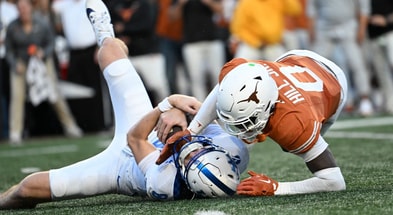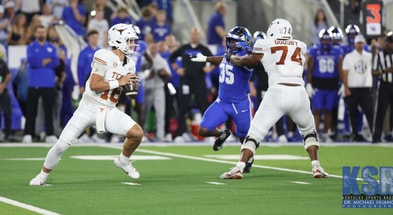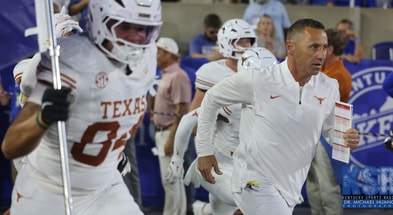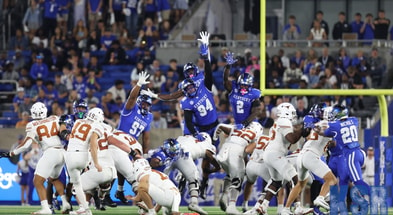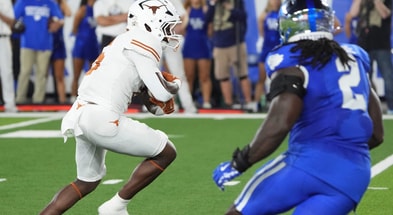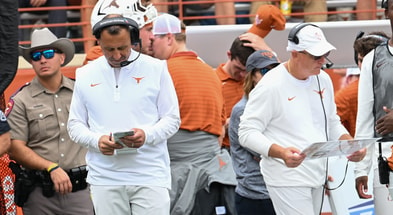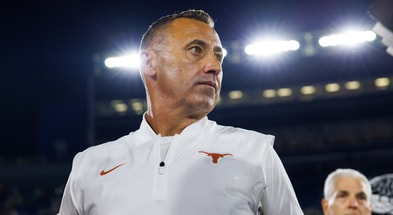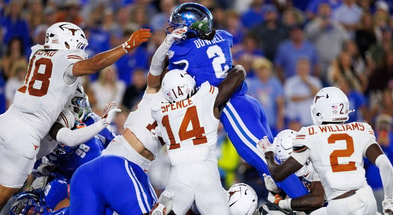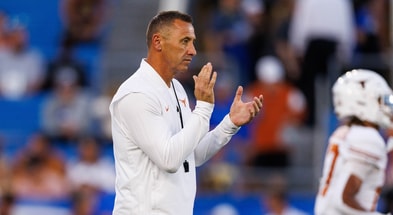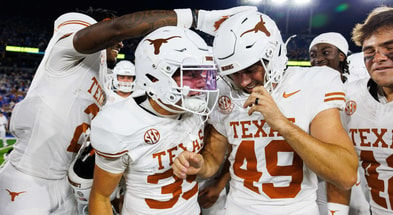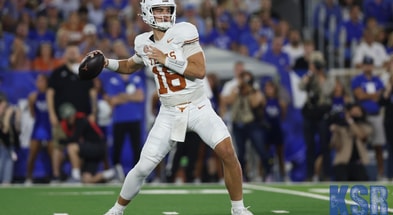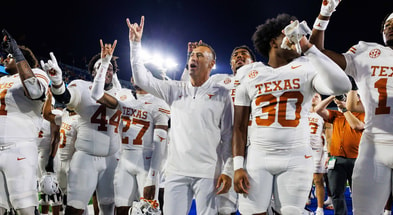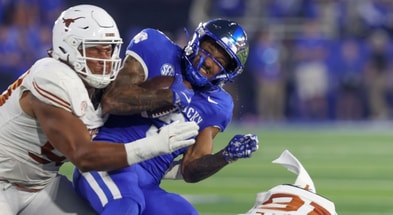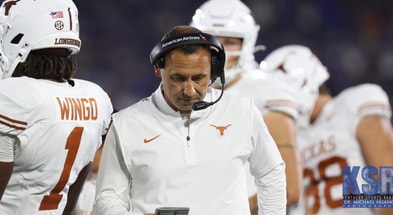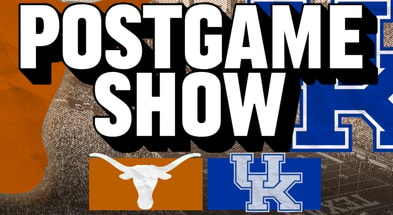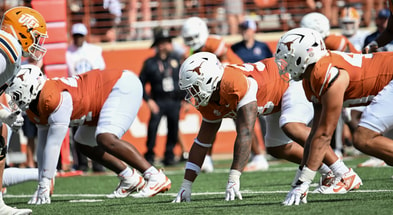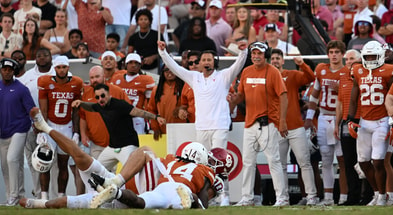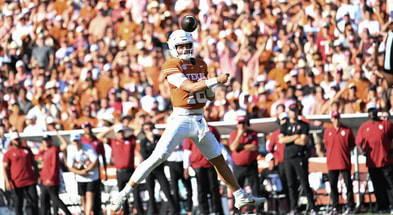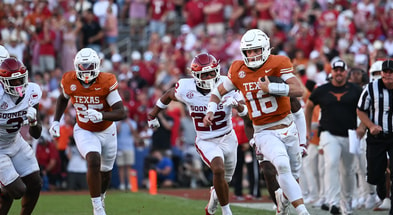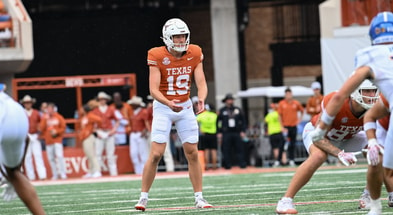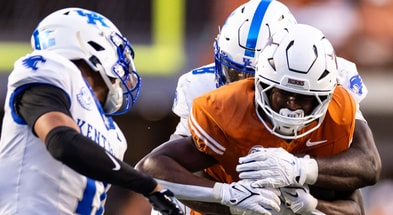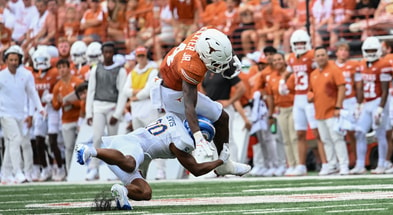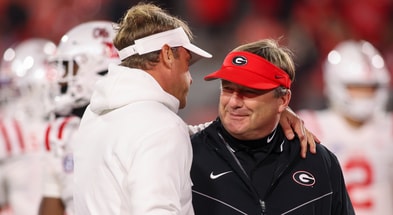Three keys to winning a potential rainy defensive battle in The Swamp on Saturday
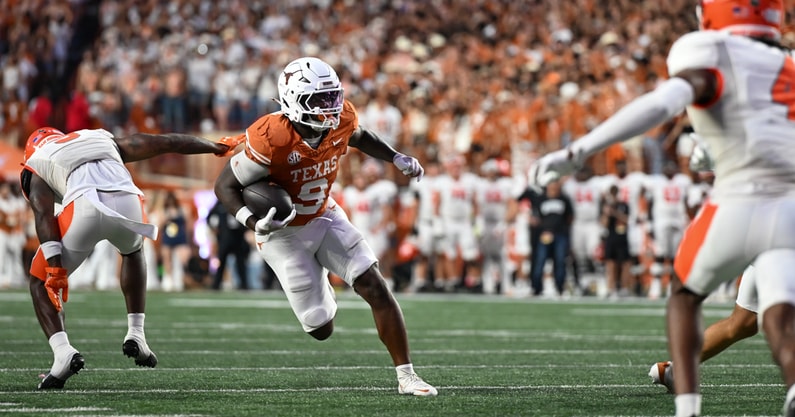
As much as Texas fans can hope for a revitalized offense following the bye with the injection of talent from Quintrevion Wisner and Emmett Mosley, there’s also a very strong chance that this offense isn’t up to par.
[Sign up for Inside Texas TODAY and get the BEST Longhorns coverage!]
The Longhorns are currently 56th in scoring and 40th in yards per game in the nation, a pitiful combo for the preseason No. 1 ranked team. The Longhorns scored just seven points against Ohio State, but did average 40 per game against lower-level FBS teams.
Still, this Longhorns offense has struggled in nearly every facet of the game. Incompletions, drops, missed blocking assignments, ineffective running games and penalties have plagued this team in some way or another at all times this year.
Thankfully for Texas, Florida isn’t much different. Their schedule has been noticeably harder, but they’re in the 100s in both scoring and yardage. That’s abysmal for any team, no less an SEC staple.
With current forecasts still projecting precipitation throughout the game, though at a lesser volume than originally thought, it still should have an impact on the game.
So how does a team from Texas out-battle the flagship University of Florida in the conditions they know best, while both teams already struggled to move the ball?
The first thing that comes to mind is the running game. It’s objectively harder to throw the ball in the rain. In some ways, this heavily favors the Gators, but their approach has been odd. Despite having a top three back in yards after contact per attempt, missed tackles forced and elusiveness, only LSU runs the ball less per game than the Gators.
If Florida prioritizes the rush with Jadan Baugh and is successful, Texas may be in trouble in a game like this. But with a healthy Wisner, more trust in the backup RBs and a blocking jolt from a healthy Mosley, Texas should be able to hold their own in the run.
But past just the rushing game, the winner of a low-scoring defensive battle almost always wins at least ⅔ of these factors: Turnovers, penalties and 3rd downs.
While Texas was technically more efficient on 3rd down against Ohio State, the Buckeyes forced a turnover and had 35 less penalty yards. Those were the only two reasons they ended up scoring against the Texas defense. When Texas won 17-7 over Texas A&M last year, they converted on a nearly 50% clip on third down and had 35 fewer penalty yards as the road team.
So how do these two teams compare in those three aspects?

Neither team is particularly good in any of these three statistics. The duo combines for bottom-40 results in all but Texas’ turnovers, something you might not have expected with Arch Manning under center.
Still, the stats do favor Texas. While not particularly good on third down, they’re much better than Florida. Twenty-four percent against defenses like USF and Miami throughout the year is a great look for how this Texas unit will fare.
Top 10
- 1Trending
Top Target: Kiffin
Why UF should pursue Ole Miss HC
- 2Hot
Florida Hot Board
Lane Kiffin & more names to know
- 3New
AP Poll
Massive shakeup in Top 25
- 4
Billy Napier
Florida fires head coach
- 5
Coaching Carousel
Hot seat intel
Get the Daily On3 Newsletter in your inbox every morning
By clicking "Subscribe to Newsletter", I agree to On3's Privacy Notice, Terms, and use of my personal information described therein.
Texas is also giving the ball away one less time per game. While the Gators haven’t been putting the ball on the ground, DJ Lagway leads the SEC with six INTs. He’s going to put the ball in harm’s way.
If a game like this goes for only eight neutral drives (starting further than 60 yards away from the end zone) per team, we may only see 30 total points from those 16 possessions. But if Florida is going to give Texas two chances at scoring from an advantageous position, the Longhorns can put this game out of reach quickly.
Penalties are pretty clearly where Texas is at a disadvantage. Florida isn’t all that disciplined, but Texas is terrible. They’ve noticeably improved since San Jose State, where they started the first two games with 165 penalty yards.
It’s hard to imagine that it gets noticeably better. This is going to be the first hostile environment they’ve played in in five weeks. Even at home, the Longhorns’ best game of penalties saw them commit nine for 70 yards. That’s likely what you can pencil them in for tomorrow, whether you like it or not.
We have a strong conviction that Texas will commit penalties that put them in holes, but also that they’ll be on the positive side of the turnover battle. That alone, alongside better play from special teams this season, may just be enough—but the goal is for this team to be much, much better on third down.
This offense is built upon finding explosives by establishing the run. Converting less than 36% of third downs shows that they aren’t doing that. The Longhorns have to find success in the run, screen, QB run, or reverse games to put themselves into second- and third-and-manageable.
Once there, Texas can still take shots downfield off play action while keeping themselves in the range where Manning’s legs can convert. If he’s making the right decisions with the ball in his hands, a third-and-three or less should have a 60% conversion rate. We’ll see.
There’s a possible game script where Texas just runs away with this one, but Florida should know its best chance is to embrace the ground-and-pound and the rain having an impact. If this is a 17-7 type of game, Texas must come out on top in these stat categories.
If they do drop a game like this, check for these three numbers. They’ll tell the story.
